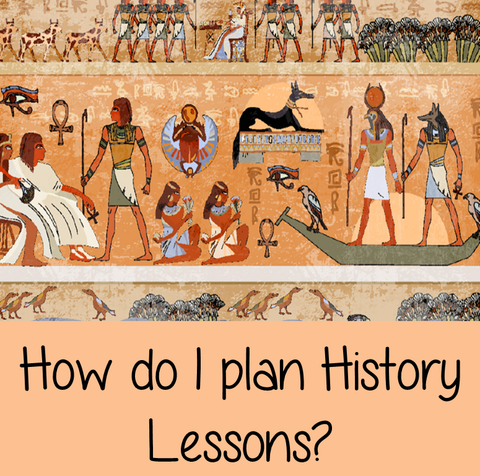How to Teach Ancient History Lessons
As primary teachers, it can sometimes feel that our history topics become formulaic with a PowerPoint and then writing recap activity. While this type of lesson does have its place, there are so many other fun and engaging ways to teach Ancient History.
- Use dramatic play to help children understand events
- Crafts and creative hands-on activities are great for understanding structures and inventions
- Replicating artwork can help the class understand the culture of the time
- Extended discussions about the rise and fall of empires
- Map walking and creation to understand how ancient civilizations fit into the world.
How can I get kids excited about Ancient History?
Children love learning new things, they switch off when the delivery doesn’t interest them. Making lessons that the children feel part of is the main first step towards getting them excited about history lessons.
Apart from that kids love disgusting and messy topics. You can teach them about the Ancient Greek’s toilet habits or how the Roman Gladiators survived. These types of lesson topics usually work to get them interested.
Another way to really engage the class is with inventions and discoveries. Children are naturally inquisitive and teaching about the science and inventions throughout Ancient History before getting them to design their own is a great way to create an involved lesson.
How do I plan an Ancient History unit?
When beginning a history unit (or most topics for that matter) I think it is a great idea to start with a knowledge harvest. If you would like to see what this looks like in my classroom you can grab a free copy of my Ancient Greeks Knowledge Harvest Lesson here. I also have a Roman’s Knowledge Harvest Lesson also free to grab here.
These lessons set the tone of the unit to be exploratory and involved. The class will be learning about the areas they are interested in and the gaps in their knowledge will be explored.
Once you have these ideas and understanding of the children’s current knowledge, you can plan out the lessons you will deliver. I usually give lessons on inventions, religions, buildings, daily life, famous figures and music and the arts.
Deciding early on the topics you will cover helps with your planning. At the end of the unit I like to finish with a round up lesson. Where the children create something that shows off their work and the learning they have developed. Posters and crafts are a great way to do this. You can also check out my round up lessons here.
What resources are available for teaching Ancient History?
I have many complete lessons and full units available for teaching about Ancient History. I have Roman units, Greek Units and Ancient Egyptians.
I am always adding to my bank of resources so please let me know if you need something that is not available yet.
How do teachers explain the significance of Ancient Civilizations?
While it is great to give children the information and knowledge of Ancient History it can be difficult to really get across the importance of these Ancient Civilizations.
Relating the information to their everyday lives is a great way to connect the way people’s lives have evolved and changed. Using inventions and adaptions to make life easier also shows how the convenience of modern life has been changed by ancient civilisations.
When children understand their place in history and the timeline of human development, they can appreciate how society is always changing.
How can I get the most out of my history lessons?
Your lessons will be valuable if the children are engaged and learning. Think carefully about the exercises you will be giving them and use their input to make sure they feel the lesson is valuable. When students (or anyone) feel involved in the creation of something they feel more connected to the outcome. Discuss upcoming classes, and let them know they have a say!
Check out my free resources and classroom activities here






